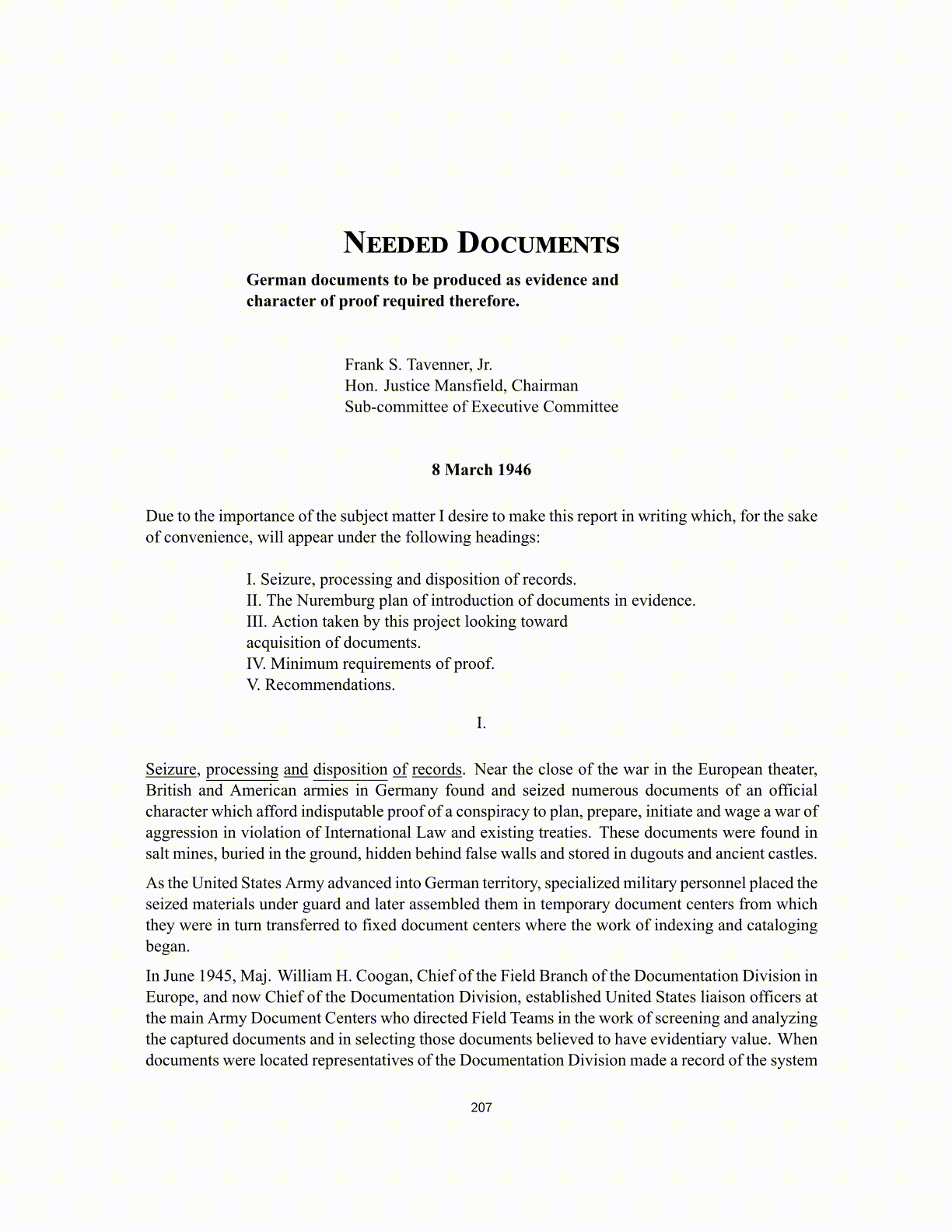
NEEDED DOCUMENTS German documents to be produced as evidence and character of proof required therefore. Frank S. Tavenner, Jr. Hon. Justice Mansfield, Chairman Sub-committee of Executive Committee 8 March 1946 Due to the importance of the subject matter I desire to make this report in writing which, for the sake of convenience, will appear under the following headings: I. Seizure, processing and disposition of records. II. The Nuremburg plan of introduction of documents in evidence. III. Action taken by this project looking toward acquisition of documents. IV. Minimum requirements of proof. V. Recommendations. I. Seizure , processing and disposition of records . Near the close of the war in the European theater, British and American armies in Germany found and seized numerous documents of an official character which afford indisputable proof of a conspiracy to plan, prepare, initiate and wage a war of aggression in violation of International Law and existing treaties. These documents were found in salt mines, buried in the ground, hidden behind false walls and stored in dugouts and ancient castles. As the United States Army advanced into German territory, specialized military personnel placed the seized materials under guard and later assembled them in temporary document centers from which they were in turn transferred to fixed document centers where the work of indexing and cataloging began. In June 1945, Maj. William H. Coogan, Chief of the Field Branch of the Documentation Division in Europe, and now Chief of the Documentation Division, established United States liaison officers at the main Army Document Centers who directed Field Teams in the work of screening and analyzing the captured documents and in selecting those documents believed to have evidentiary value. When documents were located representatives of the Documentation Division made a record of the system 207